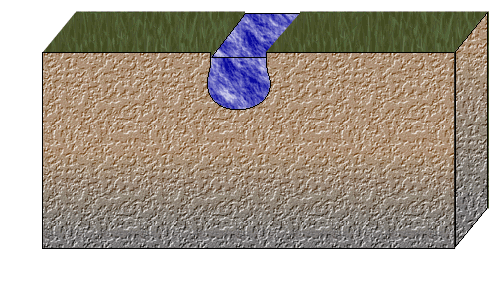
| glossary | menu | Normal | lg | hc | 8.) Rosgen Classification of Stability and Change > Channel Evolution Model Revisited |
| < Previous | 1 | 2 | 3 | 4 | 5 | 6 | 7 | 8 | 9 | 10 | 11 | 12 | 13 | 14 | 15 | 16 | 17 | 18 | 19 | 20 | 21 | 22 | 23 | Next > |
Channel Evolution Model Revisited

Channel evolution models have been developed to predict changes in channel pattern, profile, and dimension. Schumm, Harvey and Watson (1984) developed a popular model that classifies channel types I through IV, which are known to systematically occur at a given time in series along a channel, or at a given location in series along time.
Type I is the initial channel condition, prior to issues of Degradation or Aggradation.
Type II is downstream of type I, and a departure to a lower base level, due to an Erosion nick point and headward downcutting, resulting in entrenchment, abandonment of the previous Floodplain, and unstable banks.Type III is downstream of type II, and a departure to widening due to bank collapse, variable sediment transport, and a shallow flow regime with less Stream power.
Type IV is downstream of type III, and a departure to increased Aggradation in the lowered channel, building a new Floodplain at the edges.
Type V is downstream of type IV, and a return to dynamic balance with stable bank heights and Stream depths that manage carrying flow and sediment pulses.
Understanding evolution sequences can assist operational forecasters anticipate fluvial geomorphological changes to the rivers in their region.
| < Previous | 1 | 2 | 3 | 4 | 5 | 6 | 7 | 8 | 9 | 10 | 11 | 12 | 13 | 14 | 15 | 16 | 17 | 18 | 19 | 20 | 21 | 22 | 23 | Next > |